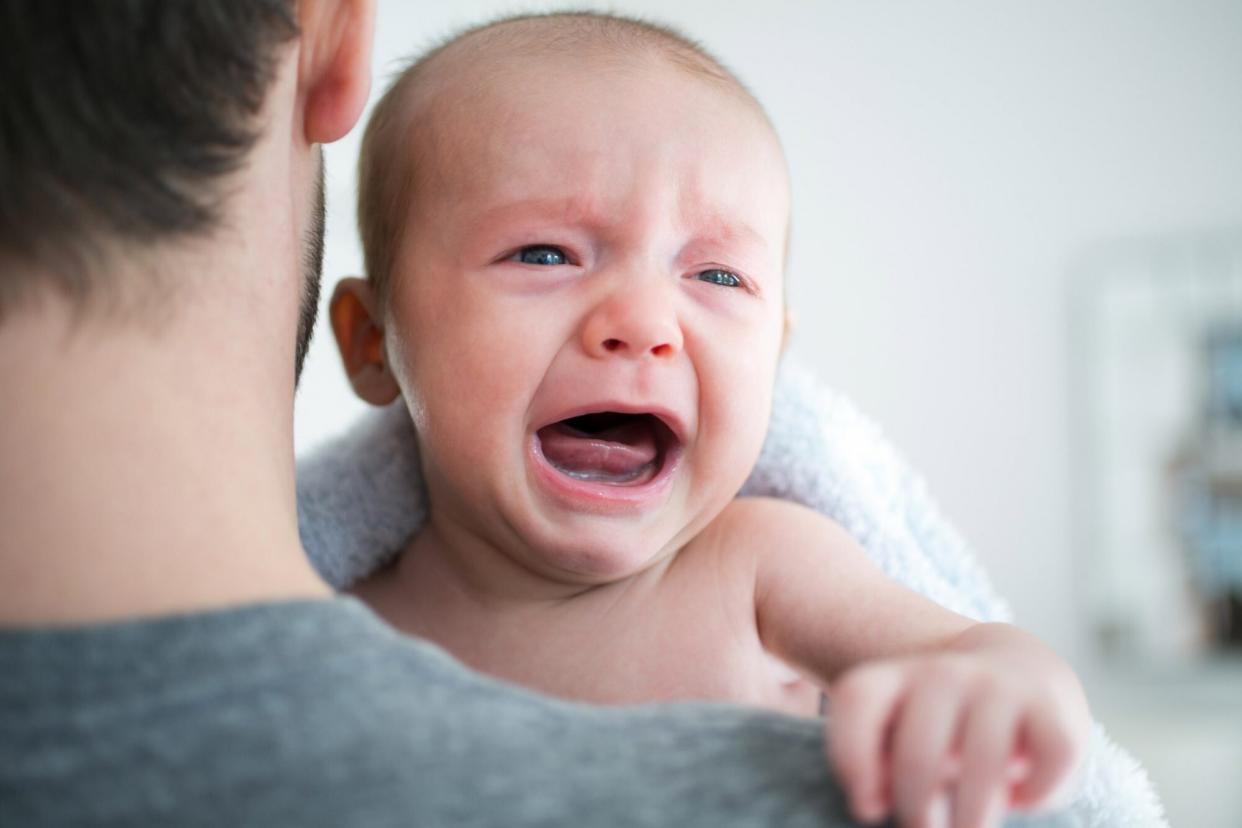COVID-19 Is Causing Croup in Some Young Kids

- Oops!Something went wrong.Please try again later.
Getty Images.
As if parents didn't have enough pandemic stress on their plates, a new concern has emerged: COVID-19 is causing croup for some young children. The phenomenon has made headlines in the past few weeks, with doctors and hospitals reporting this symptom during the current Omicron surge.
It's understandable to feel a bit of panic when information like this emerges, but thankfully, experts say you shouldn't worry too much. Most children with croup can successfully recover with home remedies (though medical treatment is required on rare occasions).
Keep reading to learn why COVID-19 might lead to croup, what symptoms look like, and when you should seek further medical attention.
What Does Croup With COVID-19 Look Like?
Croup is characterized by a swelling of the upper airway—namely the voice box (larynx) and windpipe (trachea). It can cause breathing issues, a classic bark-life cough, and a high-pitched whistling sound during inhalation, known as "stridor." It generally affects children between 3 months and 5 years of age, according to the American Academy of Pediatrics (AAP).
"Viral croup almost always includes a barky cough," says Michael B Grosso, M.D., FAAP, pediatrician and medical director of Huntington Hospital in New York. "Less often, there is also noisy breathing, mostly during inspiration, that may be associated with labored, rapid respiration."
Croup is caused by different viruses, including parainfluenza, respiratory syncytial virus (RSV), enteroviruses, and influenza virus. Non-COVID coronaviruses have always been associated with croup, and even before the Omicron variant, there were cases of croup associated with COVID, says Dr. Grosso.
"From what we've seen locally, the croup caused by COVID isn't more or less severe than that caused by other viruses," Dr. Grosso explains. "It's important to keep in mind, however, that croup in general can have a wide range of severity, with some children requiring no medical treatment at all while a small number of others progress to needing a pediatric ICU."
Kristina Deeter, M.D., a pediatric intensivist and specialty medical officer for pediatric critical care medicine at Pediatrix Medical Group, says that she's seeing croup in the patients she's treating, but it tends to impact younger kids most. "While older kids have been complaining of congestion and sore throats, younger children—less than 2 years of age—have often been presenting with a croup cough," Dr. Deeter describes. "We are most commonly seeing toddlers around 18 months of age being admitted with a croupy cough."
Why Are Children Experiencing Croup With COVID-19?
Dr. Deeter believes the increase in croup is likely because Omicron attacks the upper part of the respiratory system, which can trigger the condition. "Whereas the initial Alpha and Delta variants tended to cause pneumonitis, or inflammation of the lung tissue, Omicron tends to stay in the upper airway—nose, mouth, and throat," says Dr. Deeter.
Early studies about Omicron support this idea. For example, researchers from Washington University found that rodents infected with Omicron had less lung damage than rodents infected with previous variants. Researchers from Hong Kong found that Omicron grew faster in human bronchial cells than in lung tissues, as compared to other COVID-19 variants.
How To Tell If Your Child Has Croup From COVID-19
Let's say your little one starts coughing and it sounds "barky" or "croupy." If croup is common with other respiratory viruses, how can you tell if your child has croup from COVID-19 specifically?
The truth is, you can't really know for sure unless your child is tested for COVID, says Ilan Shapiro, M.D., medical director of health and wellness at AltaMed Health Services. "It's difficult to make a diagnosis without a lab test to confirm which virus is causing the symptoms," Dr. Shapiro explains. Talk to your doctor to learn if and when to test your child.
How Is Croup Treated in Kids?
"The treatment for croup, regardless of the root of the viral infection, remains the same," says Dr. Shapiro. It usually involves at-home remedies like using a humidifier, running a warm bath to breathe the moist air, drinking extra fluids, taking child-safe pain relievers, and keeping calm. More serious cases might need to be addressed with inhaled breathing treatments or steroid medication.
Dr. Deeter says that the only difference in treatment protocols she's seeing with croup caused by COVID-19 is that children with more serious cases aren't responding as quickly to steroids (racemic epinephrine nebs, specifically). Still, these children are being successfully treated in the hospital. "Many of these patients are not improving quickly in the emergency department, and instead have to be admitted to the pediatric floor while the steroids slowly improve their illness," she explains.
What To Do If You Suspect Croup
Anytime your child is presenting with symptoms of croup, you should call their pediatrician, says Dr. Grosso. "If an infant or toddler develops both a barky cough and noisy, labored breathing, I would want to check out the situation with an office visit," he says. Most pediatricians have plenty of experience treating croup, so it'll usually be a routine check-up.
However, if there are signs of severe airway obstruction, then a trip to the emergency room is necessary, cautions Dr. Grosso. Symptoms of severe croup include blueness around the lips, extreme sleepiness, continuous stridor (especially when they're not agitated), severe breathing difficulties, excessive drooling, and difficulty swallowing. Parents should be extra vigilant with children under the age of 1 year old, as well as kids with underlying health conditions.
Still, despite the rising numbers of croup associated with COVID-19, it's important to remember that most children aren't experiencing severe symptoms. "Fortunately, this is quite rare," Dr. Grosso assures.

